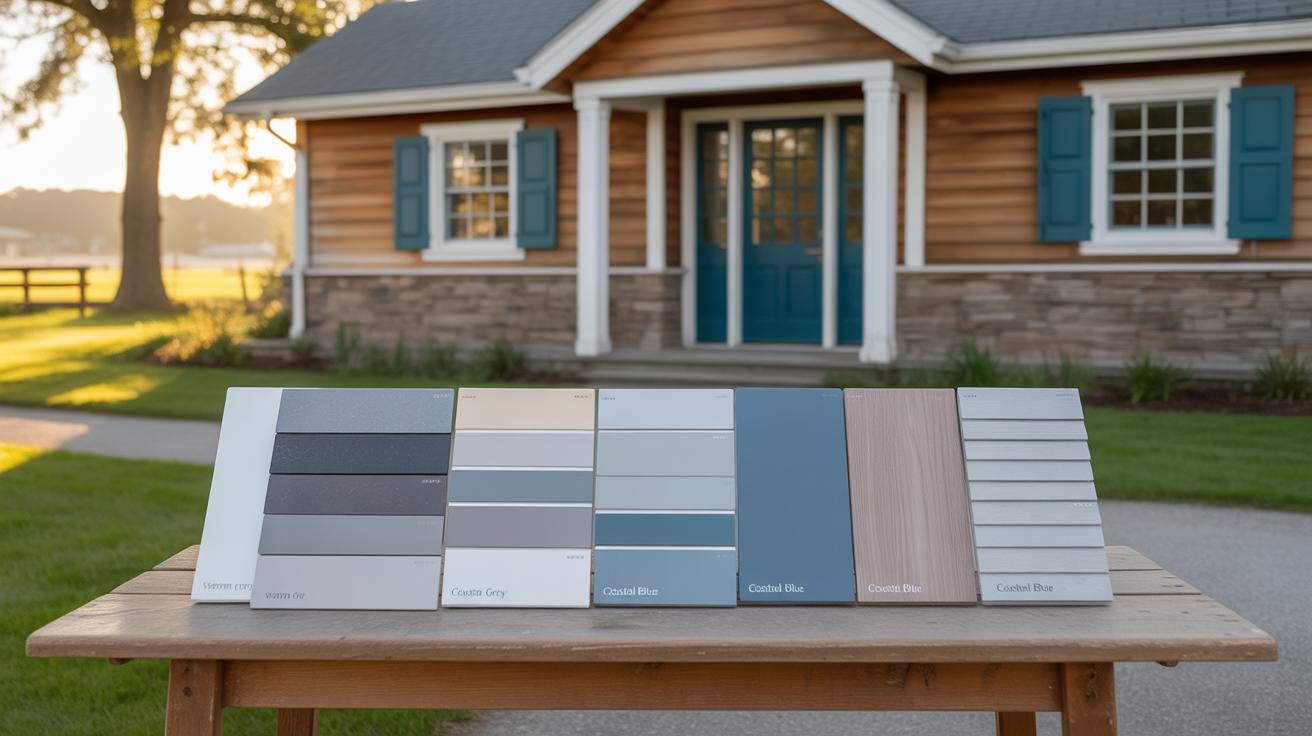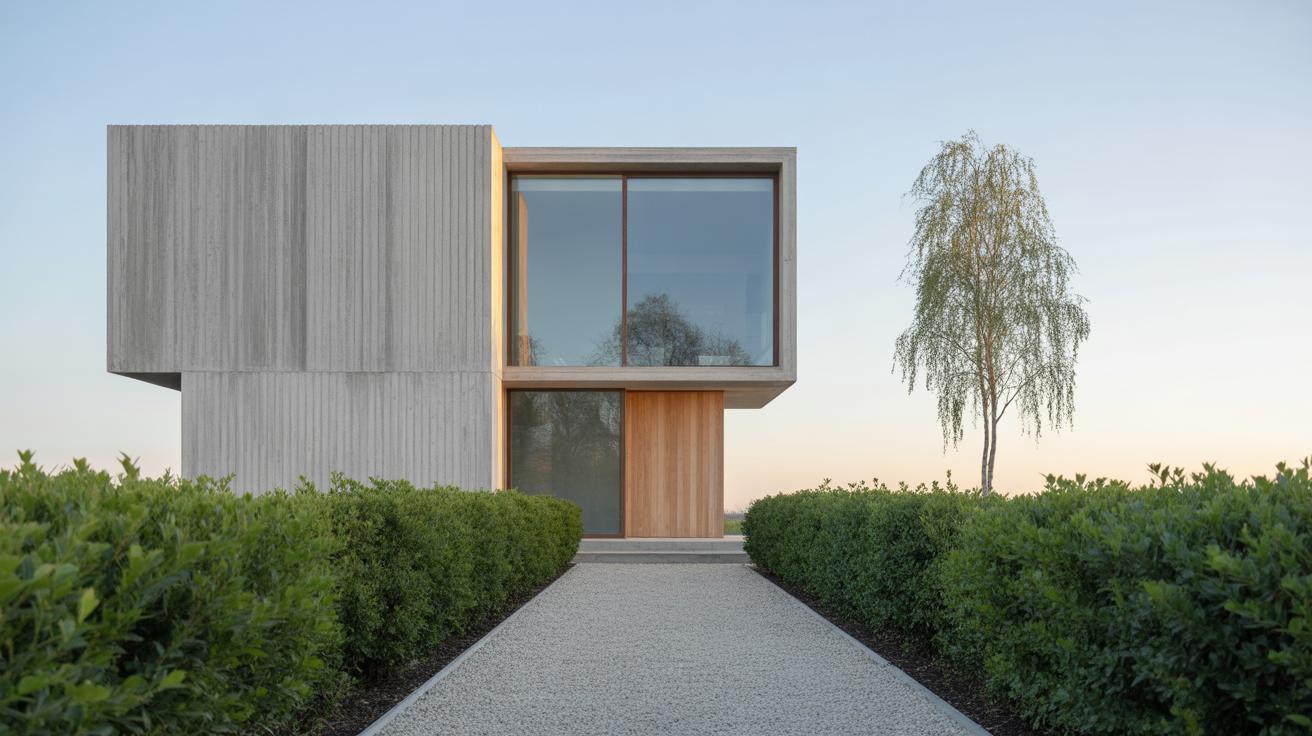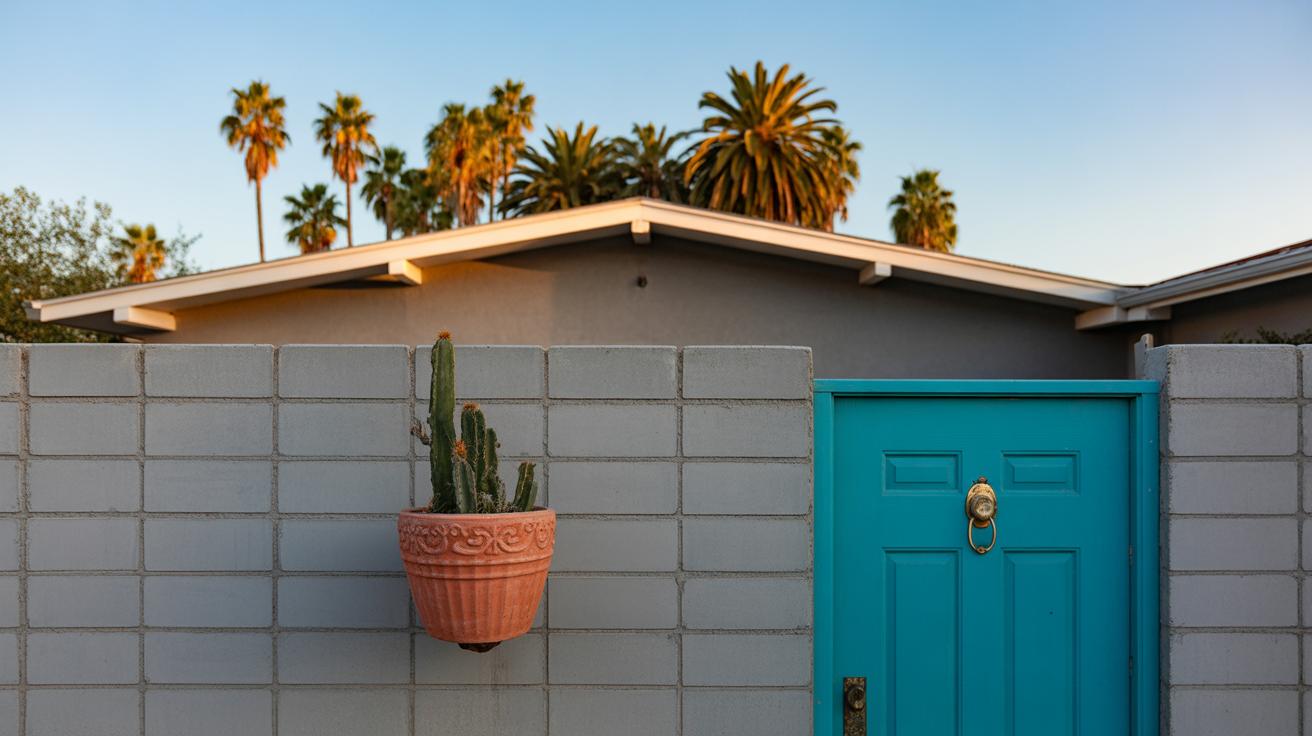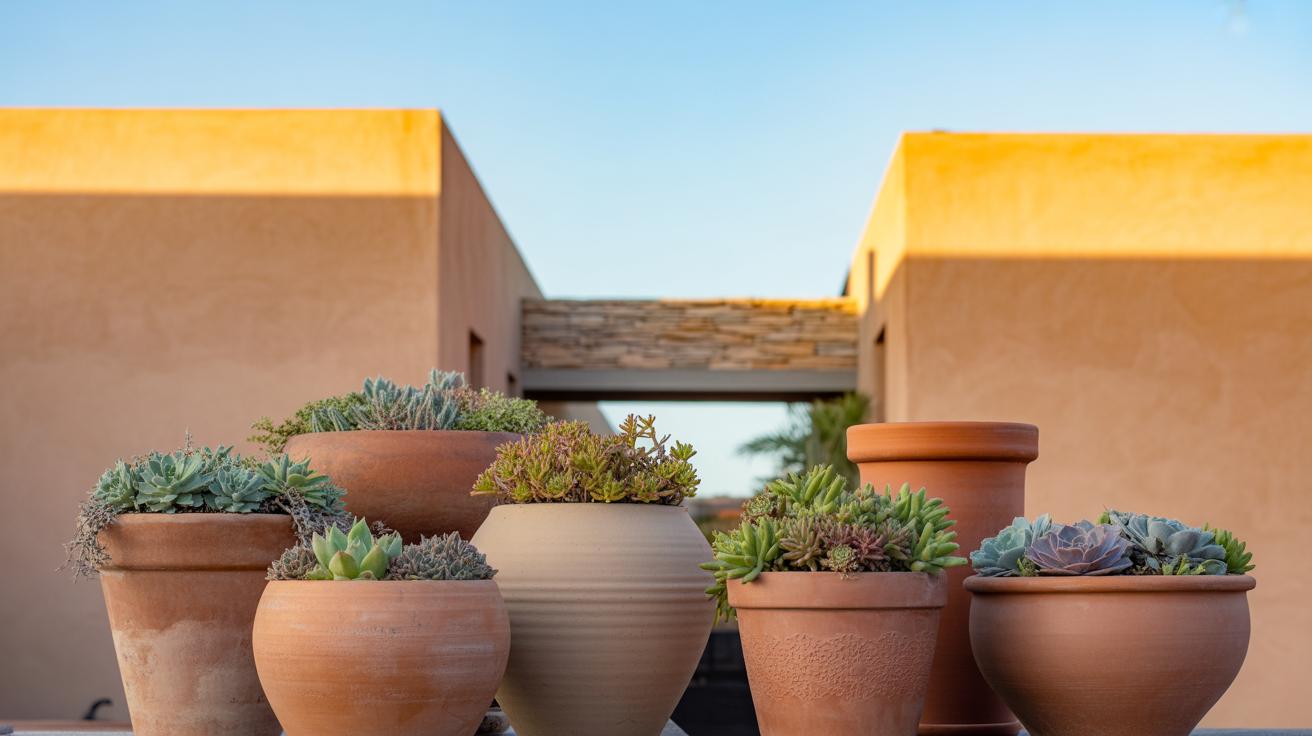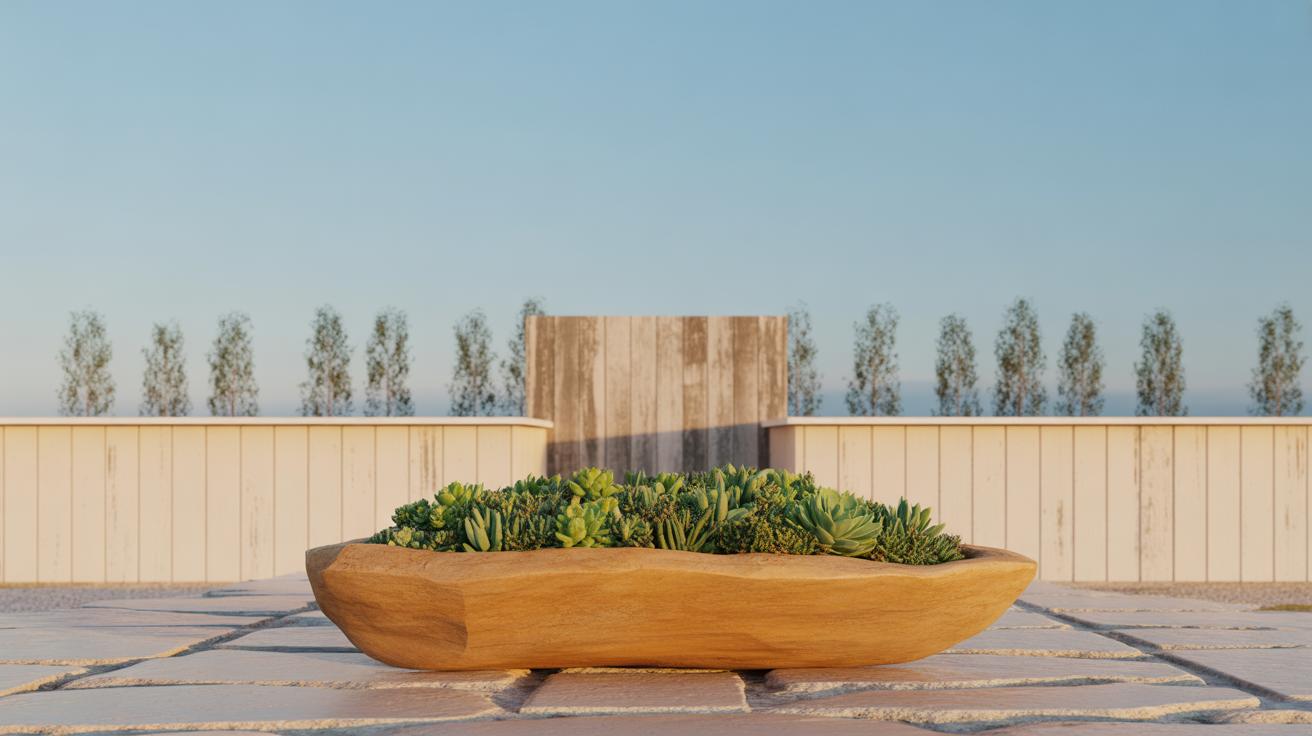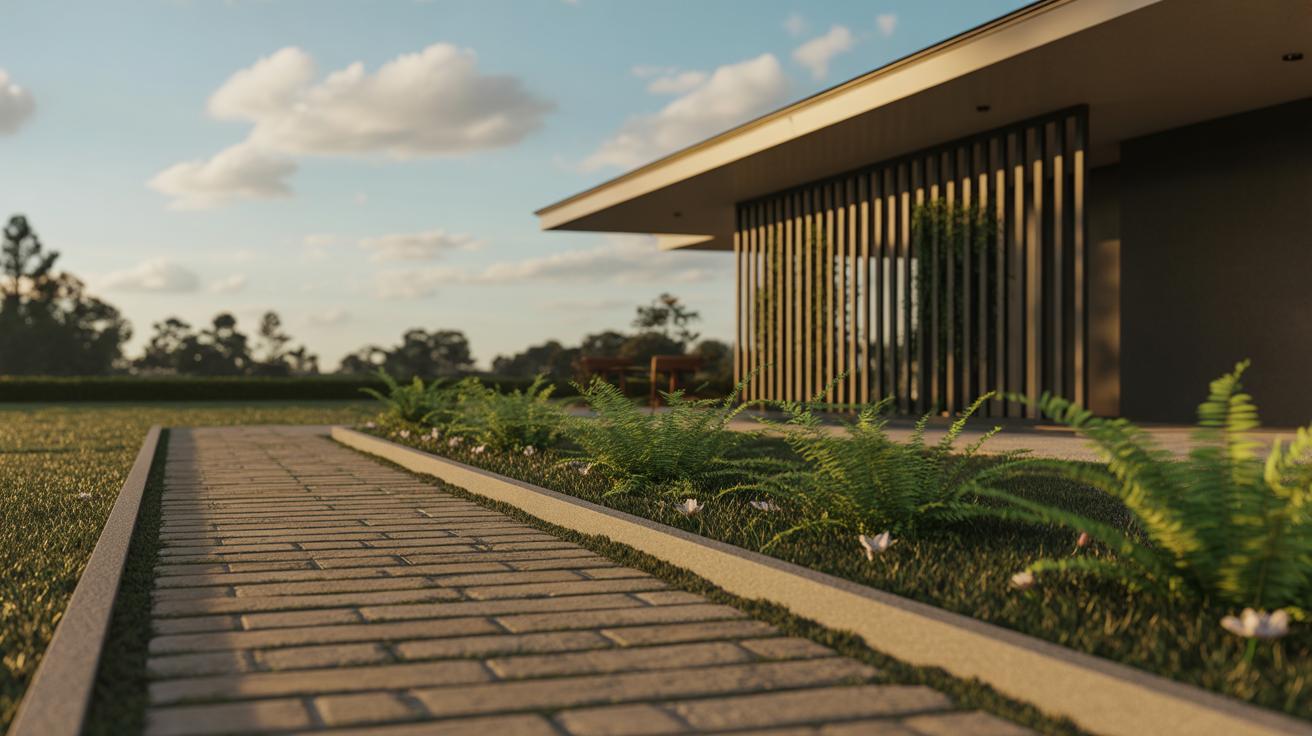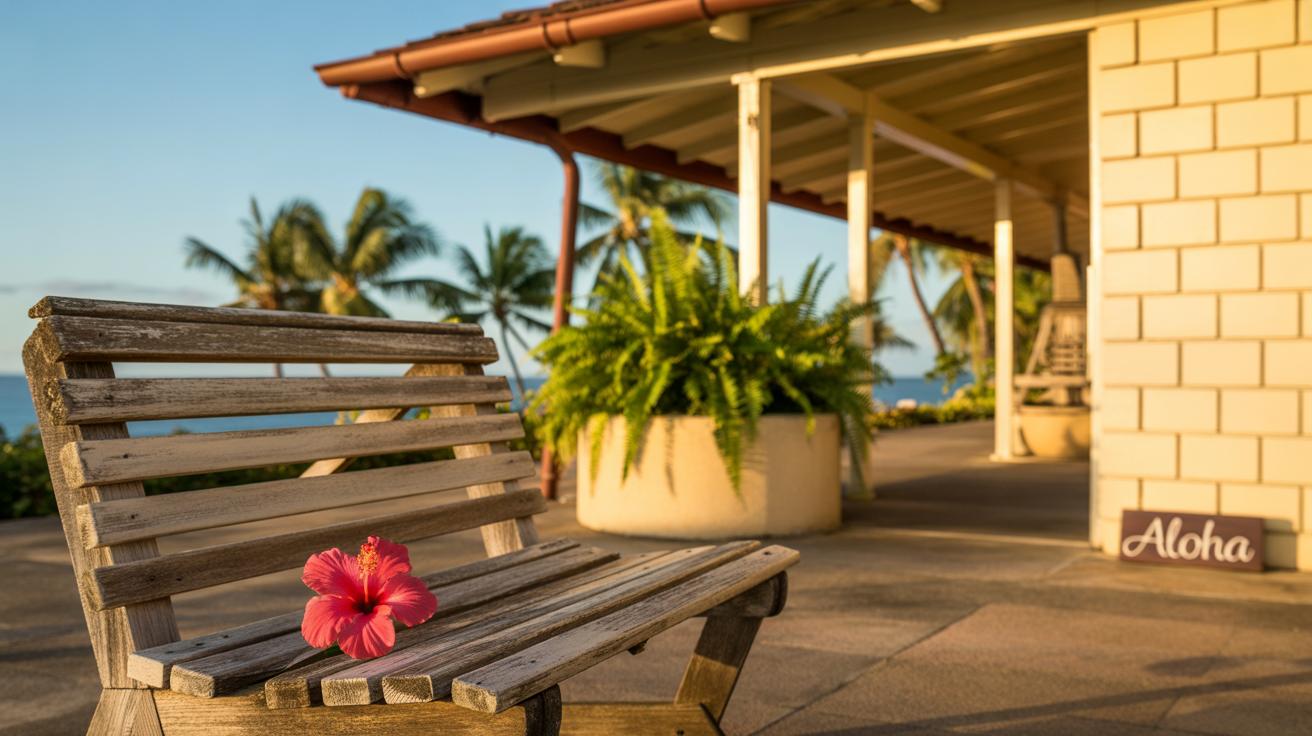Introduction
Mid-century houses stand out for their unique style and design rooted in the 1945-1970 period. This article focuses on ideas for improving the exterior of your mid-century house by exploring two key aspects: color and cladding. These elements can change the entire look and feel of your home, making it attractive and welcoming.
You’ll discover simple tips on selecting the right colors that highlight the distinctive features of mid-century architecture. We will also explore different cladding materials and styles that are typically used in mid-century homes. By the end of this, you’ll have clear and actionable ideas to refresh your home’s exterior effectively.
Understanding Mid Century Architecture Principles
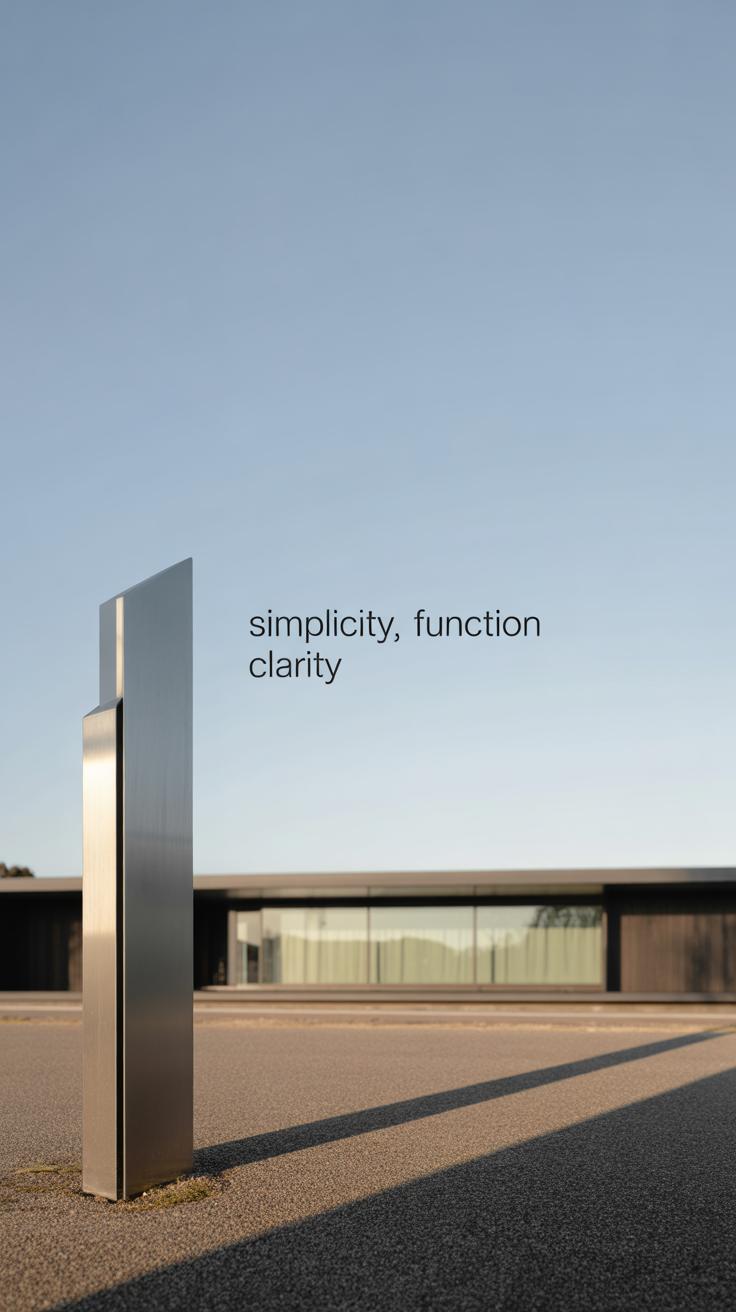
Mid-century architecture puts a strong focus on simplicity and practical function. It’s not about excess or ornate details, but rather clean lines and purposeful design. The exterior of these homes usually feels straightforward, almost stripped down—nothing there without a reason. You might notice the way these houses often blend into their surroundings, blurring boundaries between indoor and outdoor spaces. This connection with nature is not just a bonus; it’s kind of baked into the style.
Think of how the design invites natural light through large windows or how the structure might open up to a garden or patio. It’s less about standing out radically and more about feeling like part of the environment. In many ways, this approach encourages you to slow down and appreciate the space around you instead of overwhelming it with flashy decorations.
Key Design Features To Recognize
Mid-century homes usually have some telltale signs on their exteriors. Firstly, they tend to spread out horizontally rather than vertically—those wide footprints mean the house isn’t towering but sprawling. Flat or very low-pitched rooflines create clean, geometric silhouettes that feel calm and steady, not dramatic or skyward-reaching.
Large glass windows or sometimes sliding glass walls make the exterior feel open and inviting, merging inside with outside. It’s common to see minimal trim around windows to maintain that honest, simple aesthetic. Another feature is the use of natural materials like wood or stone in cladding, supporting the sense of harmony with nature.
Why These Features Matter For Exterior Choices
Because these houses emphasize broad, horizontal shapes and clear lines, your choice of color and cladding materials naturally plays a big role in enhancing or detracting from those qualities. For example, flat rooflines and wide facades call for colors that can visually stretch or ground the house, depending on your goal. You wouldn’t want a cladding that breaks the flow or adds too much texture, as it can spoil the simplicity mid-century style strives for.
The extensive use of glass means you’ll want exterior materials that don’t clash but rather support the feeling of openness. That’s why natural wood or smooth stone often works—they’re subtle and blend rather than compete. Colors that echo natural tones often fit best, tying the home back to the environment it respects. So, your cladding and paint aren’t random choices—they become part of a quieter conversation between the architecture and the landscape.
Selecting Colors For Mid Century House Exteriors
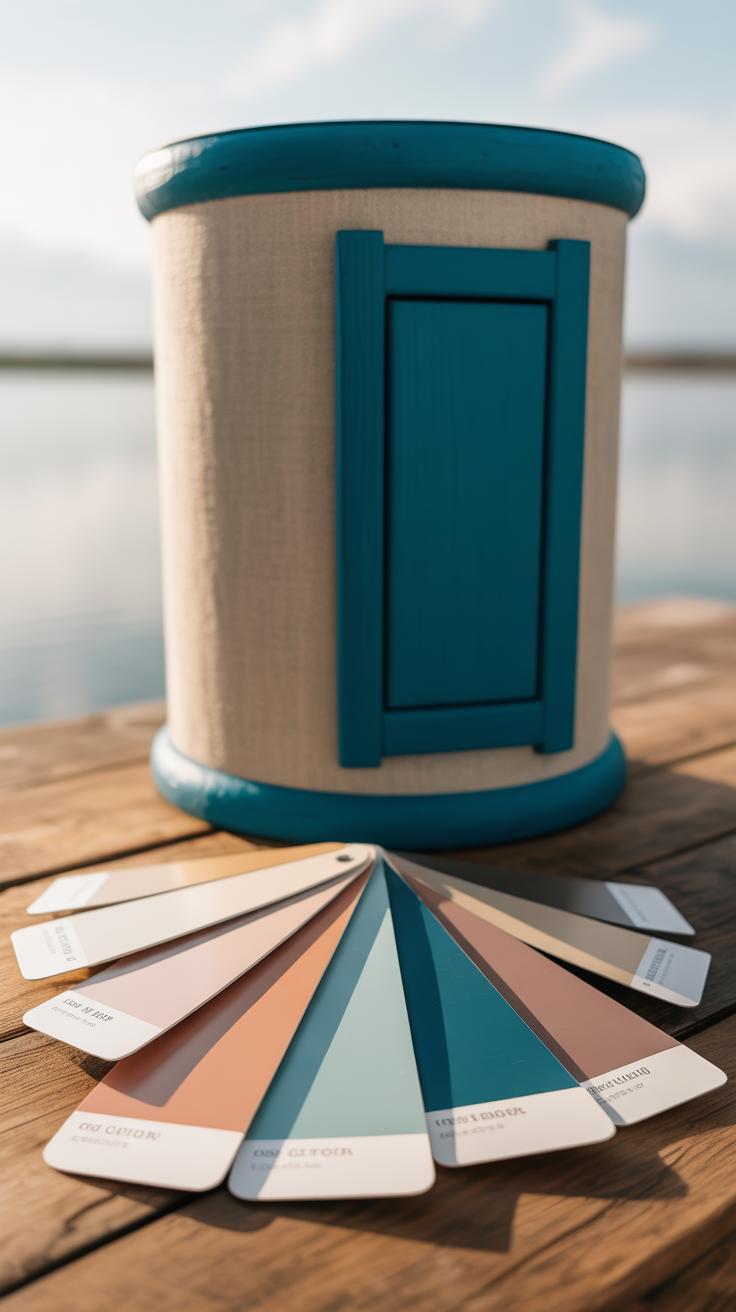
Popular Color Palettes From The Era
Mid-century homes often favored color schemes that felt both warm and restrained. Think of muted earth tones mixed with brighter accent shades. You might picture colors like olive green, mustard yellow, burnt orange, or even teal. These palettes created a kind of quiet energy—nothing too loud, yet never dull.
For example, pairing a soft gray with natural wood tones was common. It gave the exterior a grounded, organic look. On the other hand, some homes went bolder with turquoise or avocado green paired with crisp white or natural stone. These combinations could highlight certain features without overwhelming the eye.
Experimenting with these palettes seems worthwhile—if only to see how they influence the vibe your house gives off. Some colors age better than others, too, especially under sun and weather.
Matching Colors To Architectural Features
Color can bring out a mid-century home’s lines and forms if you play it carefully. For example, painting the window frames in a darker, contrasting color can make them stand out—drawing attention to those large glass panes or slim mullions typical of the era.
Sometimes the horizontal lines of a roof or siding get lost in a single shade. Breaking them up with different colors can emphasize the home’s structure. Consider a deep charcoal for fascia or trim paired with a lighter wall color to make those clean lines pop.
Another trick is to highlight materials like stone or brick with surrounding paint that complements but doesn’t compete. When the colors feel intentional—almost curated—you notice the original design details more clearly. It’s a subtle way to respect the home’s character while bringing fresh life to it.
Types of Cladding Used in Mid Century Homes
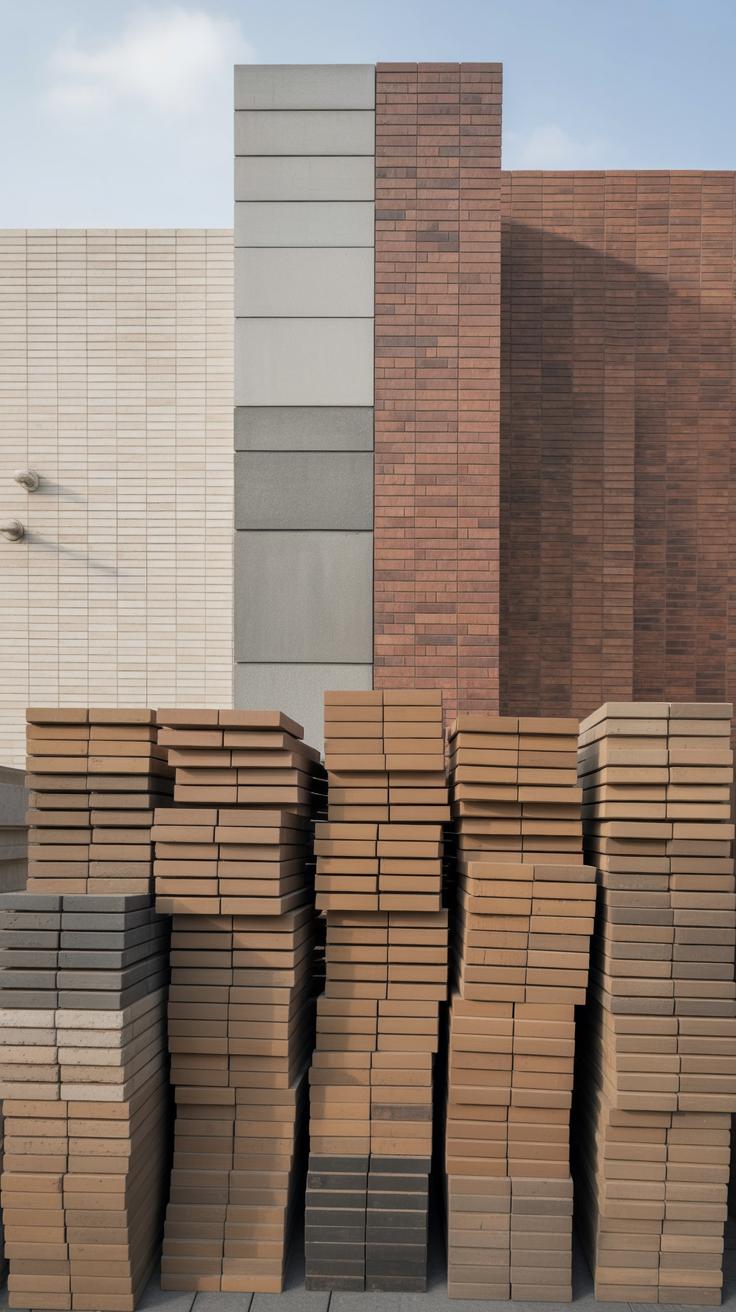
Mid century homes often show a quiet variety in their exterior cladding choices. These materials do more than just cover walls; they shape how the home feels and lasts. You’ll notice certain materials appear more frequently, each bringing something unique to the table.
Wood cladding, for example, is almost a hallmark of mid-century design. It’s not just about the natural warmth that wood provides but also its versatility. When you walk past a mid-century home clad in timber, there’s a subtle texture and grain that invites a closer look. Of course, wood demands care. You’ll want to keep up with sealing or staining to avoid weather damage and fading, yet many find the maintenance part of the charm—a way to stay connected to the house over time.
Stone and brick also show up in plenty of mid century exteriors. These natural materials add a sense of permanence and texture that’s hard to replicate with synthetic choices. Brick, with its repetitive pattern, introduces a structured feel without overwhelming the design. Stone can be rough or smooth, each choice changing the character dramatically. What’s interesting is how these materials were often paired with large glass panels—creating a strong yet open feeling.
Other natural materials pop up now and then, sometimes in creative cladding mixes. It’s almost like the house wears a story on its walls, telling of local resources and the builder’s preferences.
- Wood reflects warmth and requires ongoing upkeep.
- Brick provides textured durability and a classic look.
- Stone offers a rugged natural appeal, varying by cut and finish.
- Mixing materials can add visual interest but keep it balanced.
So, when considering your own mid-century exterior, what kind of cladding feels right? Are you more drawn to the organic feel of timber or the solid presence of stone? It’s worth thinking about how these materials will age and what kind of personality they’ll lend to your home as years pass.
Integrating Cladding With Color Choices

Choosing cladding finishes alongside color can feel a bit like walking a tightrope. You want harmony without sameness. The trick is to find tones in your cladding that echo or complement your paint palette without making the whole facade look flat or overly busy.
For instance, if your home has warm wood siding, consider muted earth tones like soft beige or dusty olive for painted areas nearby. These hues let the natural texture breathe and prevent cladding from competing with the color. Sometimes a subtle contrast—say, charcoal gray stone with a light cream paint—freshens up the look more than you might expect.
Combining Different Materials Tastefully
Mixing wood, stone, and paint demands a careful eye. You don’t want your exterior to feel chopped up or cluttered. A practical approach is to let one material act as the primary backdrop and use the others as accents. Imagine wood panels stretching across most of the facade, with stone framing the entrance or foundation. Then, paint can highlight trim or window frames.
Keeping the finish consistent helps too. If your stone is rough, balance it with smooth, flat paint rather than glossy surfaces. The mid-century look favors simplicity but appreciates texture contrast. I once saw a home where a blend of cedar siding, river rock, and a pale blue trim came together nicely because the owner stuck to this principle.
Tips For Avoiding Overwhelming The Design
It’s tempting to experiment with lots of materials and colors, but restraint often works better here. Mid-century design leans toward minimalism; too many cladding types or colors dilute that effect. Choose two or three materials maximum, and restrict the color palette to a few shades. This keeps the exterior unified and calming.
You might wonder if that limits creativity. Maybe in a way, but the goal is to respect the clean lines and openness typical of mid-century homes. Think of it as editing rather than adding. If you like wood and stone, pick one color for paint and use variations of wood stains or stone hues, rather than introducing unrelated tones.
Enhancing Your Homes Architectural Details

Drawing attention to the unique features of a mid-century home can really change its presence. Think about how color and cladding don’t just cover a surface—they can emphasize the lines and shapes that make these homes special. Often, subtle contrasts are what stand out the most.
Highlighting Window Frames And Rooflines
Window frames and flat rooflines are classic mid-century details that deserve a bit of spotlight. Using a contrasting color on the window frames can make them pop against a more neutral wall. Sometimes, a darker trim around windows brings out their geometric precision better than a matching shade would. As for rooflines, painting or cladding just the fascia or eaves in a color that contrasts with the main siding creates a sharp edge that defines the structure’s outline. It’s a simple step, but it shifts the eye right where you want it.
Accentuating Beams And Open Floor Plans
Mid-century homes often feature exposed beams and wide open layouts that invite outdoor light. Highlighting those structural beams on the exterior by staining or cladding them differently reinforces their importance. For example, wrapping exterior posts in wood or metal trim can make them feel intentional instead of merely structural. Open floor plans are tricky from the outside, but large glass walls framed in standout colors or materials can hint at the openness within. Sometimes a bit of texture on the cladding near entries or openings can suggest the flow of indoors and out without cluttering the design.
Using Natural Elements To Complement The Exterior
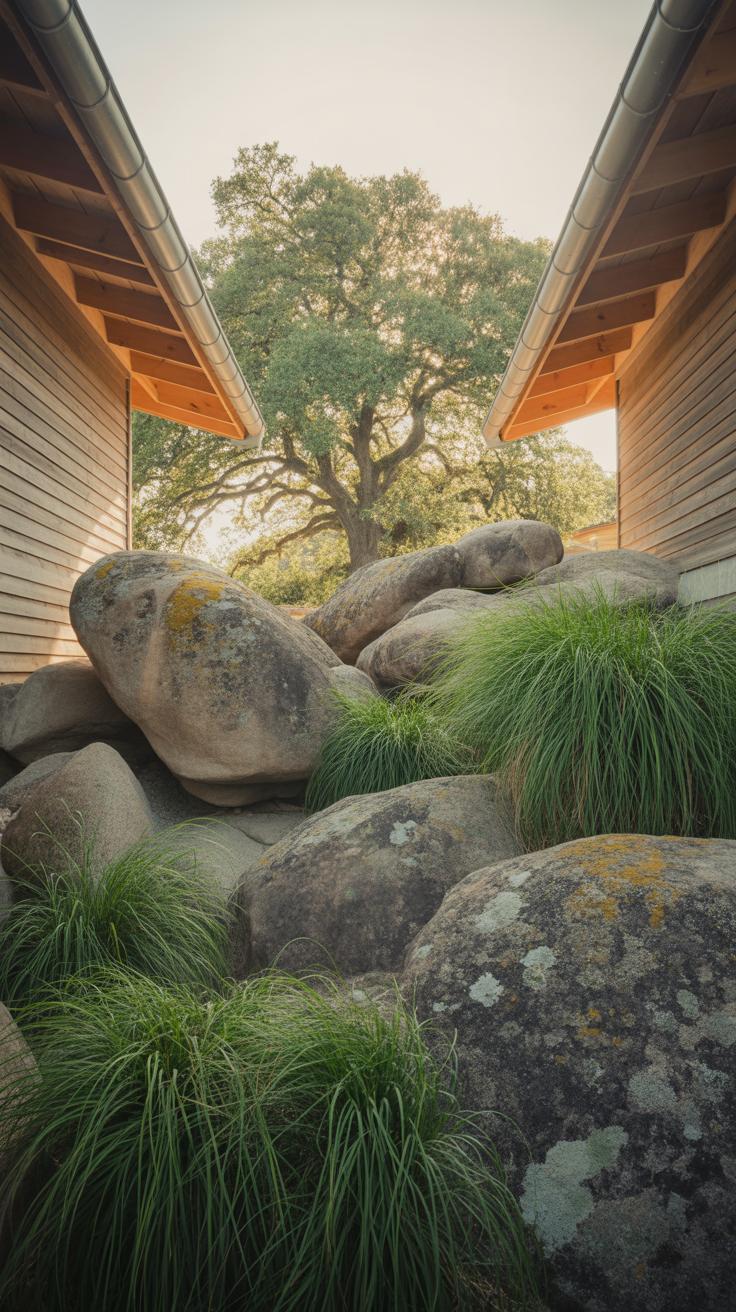
Mid-century homes have a unique relationship with their surroundings—the design often feels like it belongs to the land, not just placed on top of it. Embracing natural elements outside can reinforce that connection. Think native plants that don’t demand constant care but echo the local environment, like grasses, small shrubs, or simple evergreens. These tend to blend in rather than compete, which I find keeps the overall feel calm and authentic.
Outdoor features such as wooden benches or stone planters add texture without feeling too ornate or flashy. A modest water feature, like a small reflecting pool or a slender fountain, can create a quiet focal point without stealing the show. Also, I sometimes wonder if the moderate use of natural stone around patios or in retaining walls fits best—there’s a balance to strike, and it depends on how bold you want to get.
Simple Landscape Designs For Mid Century Homes
Simple is usually better here. You want your landscaping to enhance the architecture, not clash. Try these ideas:
- Low-maintenance plants—think succulents, ferns, or boxwoods—placed sparingly along pathways or near the foundation.
- Flat, open lawns or gravel beds that accentuate the home’s lines without overwhelming them.
- Symmetrical yet relaxed plant arrangements—maybe two tall plants flanking an entrance to create subtle framing.
- Ground covers that soften sharp edges but don’t smother concrete or wood accents.
The goal is for the landscaping to feel almost like an extension of the structure, not a distraction. Oddly, too much greenery might mask the clean lines that make the house feel mid-century in the first place.
Outdoor Lighting And Walkways
Lighting outdoors can highlight a mid-century home’s best details after dark. Simple, understated fixtures mounted close to the ground work better than ornate posts or lanterns. LED strip lights under eaves or hidden in planters can give a soft glow without drawing too much attention.
Walkways made from natural materials—flagstone, concrete slabs, or even pea gravel—add texture but keep things grounded. I’ve noticed that straight, clean paths reflect the design’s geometry nicely, yet some gentle curves can soften the look if you prefer. Incorporate subtle lighting along the edges, which helps guests navigate without overpowering the porch or facade.
It’s a bit tricky, because if lighting’s too bright or harsh, it breaks the relaxed vibe. So go for warm tones and minimal fixtures that guide rather than spotlight. This way, your outdoor area feels inviting and connected through day and night.
Maintaining Your Mid Century House Exterior

When it comes to caring for your mid-century house exterior, the details really matter. The original finishes and cladding materials—like wood siding, brick, or painted surfaces—need a bit of thoughtful upkeep if you want to keep that character intact. It’s not just about repainting or cleaning; it’s more about knowing when and how to step in before wear shows itself too much.
Cleaning And Repair Tips
Wood surfaces tend to collect dust and dirt, which can dull their appearance. I find using a soft brush with mild soap and water works well—avoid anything too harsh or abrasive. Brick can be tricky; gentle scrubbing with a stiff brush and a mixture of water and vinegar often helps, but test a spot first to avoid discoloration. Painted finishes need your attention most often. Dirt and mildew can settle quickly, especially in shady spots, so a regular rinse with a garden hose or a gentle wash is useful. Don’t forget to check for peeling paint or cracks; those are early signs you’ll need to address before moisture gets in.
Planning For Weather And Aging
Weather can really test your finishes over time, and the climate you live in will shape your maintenance routine. If your home is in a wetter zone, more frequent inspections and touch-ups may be necessary to prevent rot or mold. Conversely, in dry, sunny areas, fading and cracking could become issues; you might want to select UV-resistant finishes wherever possible. I’ve learned the hard way that setting a maintenance schedule—maybe once or twice a year—is just easier than waiting for problems to become obvious. It’s the small, consistent efforts that keep the exterior from looking tired.
Still, there’s no perfect formula. You might find certain finishes hold up better than expected, or parts of your home age differently. So keep an eye on your house, be ready to adjust, and—perhaps—accept a few imperfections here and there without rushing to fix everything immediately.
Modern Updates That Respect Mid Century Style
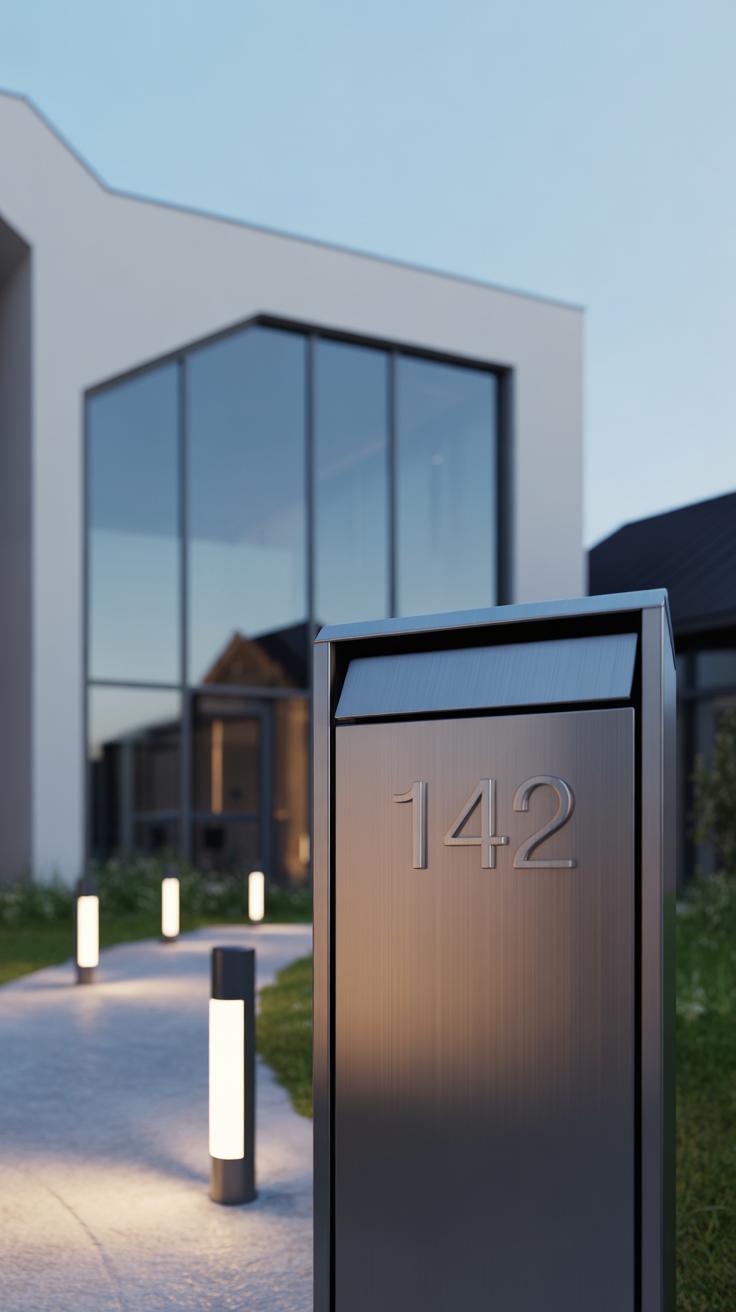
Updating a mid-century home’s exterior without losing its character can feel tricky. You want to keep that distinct look but also introduce some modern touches that reflect today’s standards and tastes. The key, I think, is subtlety—small changes that complement rather than overpower.
Start by looking at materials. New options like fiber cement boards or sleek steel accents can work well if you choose colors and finishes that echo mid-century palettes. Think about how glass and wood combined in the original designs; modern materials can mimic that interplay but with better durability.
Energy-wise, window upgrades present a good opportunity. Swapping out old frames for well-insulated, slim-profile modern windows helps retain that clean, horizontal emphasis mid-century homes favor. Plus, insulated cladding—something like high-quality composite panels—can improve comfort without hiding the original structure’s lines.
But here’s where it gets complicated: too much insulation or overly shiny surfaces might clash with the warmth and simplicity that define the style. So, you’ll want to balance new features with respect for the original aesthetic. Can you add modern? Yes, but carefully. It’s almost like tuning a classic instrument—you don’t want to change the sound, just refine it a bit.
Bringing Your Vision To Life
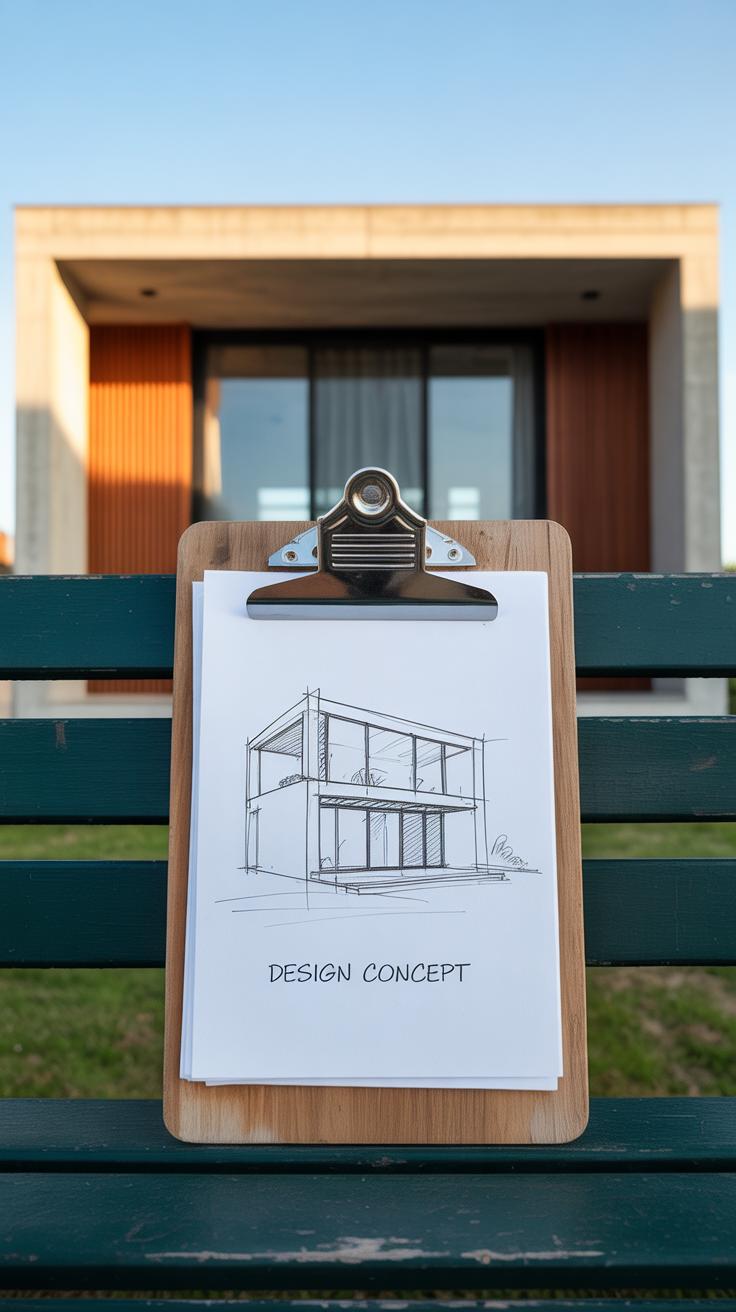
Planning a mid-century exterior project can feel overwhelming, but breaking it down helps. Start by setting a budget that matches your goals—maybe you want to repaint and swap some cladding, or perhaps a full refresh is on the table. Costs vary widely depending on materials and labor, so getting multiple quotes can clarify what’s realistic. Don’t forget to include a buffer for unexpected issues; these homes sometimes reveal surprises once work begins.
As for timing, repainting might take a few weeks, but recladding can stretch longer, especially if structural work is involved. Weather also plays a role—spring and fall usually offer better windows for exterior jobs. Give yourself some wiggle room; delays happen, often without warning.
Finding the right professionals is crucial. Look for painters and builders who have experience with mid-century designs. They understand the period’s materials and styles, which means fewer mistakes and more authentic results. Checking portfolios or visiting local projects can give you a sense of their work quality. Sometimes, word-of-mouth recommendations reveal gems you wouldn’t find otherwise.
Lastly, don’t hesitate to ask questions. If a designer suggests a cladding option you’ve never heard of, pause and ask for examples or references. You want collaborators who listen and respect your vision, but also know how to translate it into practical steps. It’s a balance, and a little patience goes a long way.
Conclusions
Choosing the right colors and cladding for your mid-century house can transform your home’s appearance while honoring its unique architectural style. Simple, straightforward color choices help emphasize the home’s clean lines and large windows. Thoughtful cladding selections can protect the structure and add character without overwhelming its design.
By understanding these elements, you can make informed decisions that balance aesthetics and function. Your mid-century house can shine with updated exterior ideas that reflect timeless style and personal taste. Take these ideas and make your home stand out in a practical and beautiful way.


